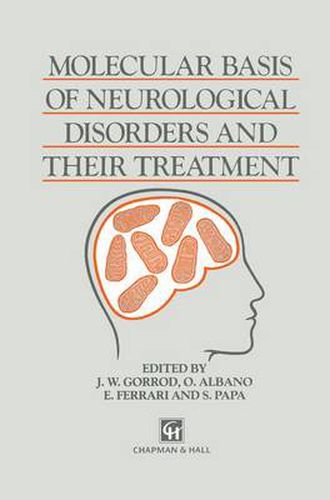Readings Newsletter
Become a Readings Member to make your shopping experience even easier.
Sign in or sign up for free!
You’re not far away from qualifying for FREE standard shipping within Australia
You’ve qualified for FREE standard shipping within Australia
The cart is loading…






This title is printed to order. This book may have been self-published. If so, we cannot guarantee the quality of the content. In the main most books will have gone through the editing process however some may not. We therefore suggest that you be aware of this before ordering this book. If in doubt check either the author or publisher’s details as we are unable to accept any returns unless they are faulty. Please contact us if you have any questions.
cytochemical techniques (ICC) which provide a useful adjunct to investigations by immunoblotting. A particular advantage of a cytochemical approach to the investiga tion of mitochondrial disorders is that it allows the mosaic distribution of certain of these defects to be detected, whereas the tissue homogeniza tion involved in conventional enzyme assays or immunoblotting precludes this. A further advantage of MEA or ICC is that only small amounts of tissue are needed, which is important since many of the affected patients are infants or small children. The main aim of this communica tion is to outline ways in which these techniques can be used in the diagnosis and further investigation of mitochondrial disorders. Reference will be made not only to those situations in which MEA and ICC offer advantages over standard enzyme asays and immunoblotting but also to contexts in which the reverse applies. 4. 2 MATERIALS AND METHODS Muscle biopsies for cytochemical investigation were snap-frozen using isopentane cooled to - 150 DegreesC in liquid nitrogen. Samples were stored in heat-sealed polythene packets in the vapour phase of liquid nitrogen containers. 4. 2. 1 Microphotometric enzyme assays Frozen sections 8 Jlm thick were cut using a Reichert-J ung Frigocut cryostat microtome equipped with motor-driven cutting action to maintain maximal reproducibility of section thickness. Sections were picked up on microscope slides and air-dried for 15 min at room temperature.
$9.00 standard shipping within Australia
FREE standard shipping within Australia for orders over $100.00
Express & International shipping calculated at checkout
This title is printed to order. This book may have been self-published. If so, we cannot guarantee the quality of the content. In the main most books will have gone through the editing process however some may not. We therefore suggest that you be aware of this before ordering this book. If in doubt check either the author or publisher’s details as we are unable to accept any returns unless they are faulty. Please contact us if you have any questions.
cytochemical techniques (ICC) which provide a useful adjunct to investigations by immunoblotting. A particular advantage of a cytochemical approach to the investiga tion of mitochondrial disorders is that it allows the mosaic distribution of certain of these defects to be detected, whereas the tissue homogeniza tion involved in conventional enzyme assays or immunoblotting precludes this. A further advantage of MEA or ICC is that only small amounts of tissue are needed, which is important since many of the affected patients are infants or small children. The main aim of this communica tion is to outline ways in which these techniques can be used in the diagnosis and further investigation of mitochondrial disorders. Reference will be made not only to those situations in which MEA and ICC offer advantages over standard enzyme asays and immunoblotting but also to contexts in which the reverse applies. 4. 2 MATERIALS AND METHODS Muscle biopsies for cytochemical investigation were snap-frozen using isopentane cooled to - 150 DegreesC in liquid nitrogen. Samples were stored in heat-sealed polythene packets in the vapour phase of liquid nitrogen containers. 4. 2. 1 Microphotometric enzyme assays Frozen sections 8 Jlm thick were cut using a Reichert-J ung Frigocut cryostat microtome equipped with motor-driven cutting action to maintain maximal reproducibility of section thickness. Sections were picked up on microscope slides and air-dried for 15 min at room temperature.